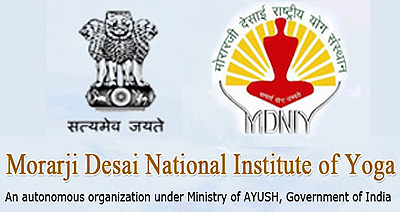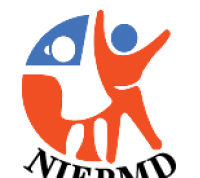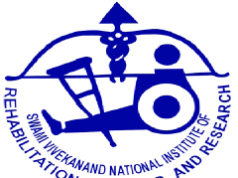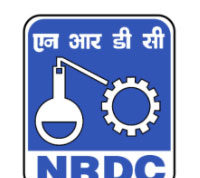
 Dr. Ishwar V. Basavaraddi
Dr. Ishwar V. Basavaraddi
Director
Morarji Desai National Institute of Yoga
Ministry of AYUSH, Govt. of India
ROLE OF YOGA to make a PROSPEROUS AND HEALTHY INDIA
Life Style and Yoga: Lifestyle is the way people live and this has immense influence on the status of health or disease an individual. Since one’s lifestyle has developed early in life, it is advisable to cultivate healthy lifestyle in early childhood. Many factors determine one’s lifestyle. Economic status determines incidence of under-nutrition in poor and obesity in the rich. Cultural values of the society dictate the dietary preferences in the population. Sedentary life is a major factor for coronary artery disease while personal habits like smoking and alcoholism determine the incidence of heart disease and cirrhosis of liver. Exercise, healthy diet, rest, and relaxation are important components of lifestyle.
Yoga is the most perfect lifestyle module as it is comprehensive and holistic in its nature. Yogic principles of lifestyle help to strengthen and develop positive health enabling us to withstand stress better. This Yogic “health insurance” has achieved by normalizing the perception of stress, optimizing the reaction to it and by releasing the pent-up stress effectively through the practice of various Yogic practices. Yoga is a holistic and integral science of life dealing with physical, mental, emotional and spiritual health of an individual and society.
It is important to adopt holistic lifestyle and follow a healthy regimen to live a healthy and peaceful life. The modern world is facing a pandemic of lifestyle disorders that require changes to be made consciously by individuals themselves. Yoga places great importance on a proper and healthy lifestyle whose main components are:
Yogic Life Style :The fallowing Yoga practices are recommended for healthy life style
- – Ahaar – Yoga emphasizes need for a healthy, nourishing diet that has an adequate intake of fresh water along with a well balanced intake of fresh food, green salads, sprouts, unrefined cereals and fresh fruits. It is important to be aware of the need for a satvic diet, prepared and served with love and affection.
- – Vihaar – Proper regular Yoga practice to relax body and mind are essential for good health. This also includes proper relaxation, maintaining quietude of action-speech-thoughts and group activities wherein one loses the sense of individuality. Karma Yoga is an excellent method for losing the sense of individuality and gaining a sense of universality.
- – Achaar –Yoga stresses the importance of Yama and Niyama. A balanced state of mind is obtained by following the moral restraints and ethical observances (Yama-Niyama). As Mahatma Gandhi said, “there is enough in this world for everyone’s need but not enough for any one person’s greed”.
- – Vichaar –Right thoughts and right attitude towards life is vital for well being. Mediation help to regulate our thought process and have right attitude in every walk of life.
Yogic Practices for Healthy Living
The widely practiced Yoga Sadhanas (Practices) are: Yama, Niyama, Asana, Pranayama, Pratyahara, Dharana, Dhyana (Meditation), Samadhi /Samyama, Bandhas & Mudras, Shat-karmas, Yukta-ahara, Yukta karma, Mantra japa, etc.
Yama’s are restraints and Niyama’s are observances. These are considered to be pre-requisits for the Yoga Sadhanas (Practices).
Asanas, capable of bringing about stability of body and mind , consists in adopting various body (psycho-physical) patterns, giving ability to maintain a body position (a stable awareness of one’s structural existence) for a considerable length and period of time as well. Asanas are widely practiced Yogic practices for healthy living.
Pranayama consists in developing awareness of one’s breathing followed by willful regulation of respiration as the functional or vital basis of one’s existence. It helps in developing awareness of one’s mind and helps to establish control over the mind. In the initial stages, this is done by developing awareness of the ‘flow of in-breath and out-breath’ (svasa-prasvasa) through nostrils, mouth and other body openings, its internal and external pathways and destinations. Later, this phenomenan is modified, through regulated, controlled and monitored inhalation (svasa) leading to the awareness of the body space/s getting filled (puraka), the space/s remaning in a filled state (kumbhaka) and it’s getting emptied (rechaka) during regulated, controlled and monitored exhalation (prasvasa).
Pratyahara indicates dissociation of one’s consciousness (withdrawal) from the sense organs which helps one to remain connected with the external objects.
Dharana indicates broad based field of attetion (inside the body and mind) which is usually understood as concentration.
Dhyana (Meditation) is contemplation (focused attention inside the body and mind) and Samadhi – integration.
Bandhas and Mudras are practices associated with pranayama. They are viewed as (the) higher Yogic practices mainly consisting on adopting certain body (psycho-physical) patterns along with
(s well as) control over respiration.This further facilitates control over mind and paves way for higher yogic attainment.
Shat-karmas are de-toxification procedures, help to remove the toxins acumalated in the body and are clinical in nature.
Yuktahara (Right Food and other inputs) advocates appropriate food and food habits for healthy living. However practice of Dhyana (Meditation) helping in self-realization leading to transcendence is considered as the essence of Yoga Sadhana. However, a judicious combination of practice of asana, pranayama and dhyana daily, keep individuals healthy and disease free.
The knowledge aspect of Yoga Sadhana is being extensively researched, with advantage to yoga practitioners. Psychological, anatomico-physiological and philosophical phenomena underlying Yoga Sadhana have been commendably understood by us today. It is a matter of satisfaction for the entire humanity. So also, elaborate and effective means of its transmission, such as internet across the globe, is a great stride for propagation of yogic knowledge. Teaching methodology in Yoga has also ingrained modern educational methodological rigours into it. There is also a worldwide growth of teaching schools of Yoga across the globe. An earnest scientific and philosophico-literary research has also caught up globally and is yet another encouraging sign of evolution of Yoga further.
Benefits of Yoga in daily Life : Daily practice of Yoga bring the fallowing some health benefits with ought any cost.
- – General fitness.
- – Better flexibility & posture.
- – Increased muscle strength and tone.
- – Weight reduction.
- – Improved immunity.
- – Increased energy.
- – Improved quality of sleep.
- – Living with greater awareness.
- – Relief from stress.
- – Better relationships
- – Better intuition.
- – Cardiovascular endurance
- – Stimulates the detoxification process
- – Cardio and circulatory health.
- – Maintaining a balanced metabolism.
- – Improved respiration, energy and vitality.

Yoga Therapy : Using Yogic principles and practices for healing is called “Yoga Therapy”. Yoga for therapy purposes is a ‘by-product’ of the Yoga Sadhana. According to Yoga Sütra of Patanjali, the practice of Yoga leads one to realize his true state: “tadä drañöuù svarüpe’vasthänam”- “Then (when yoga is practiced) the Perceiver resides in its true form”.
In all the references to Yoga, be it Upanishads, Bhagavad Gita, Yoga Sutra or other texts, it is clear that Yoga is a “Science of a spiritual discipline (anuçäsana çästram) aimed at “Freedom” (Kaivalyam) the Mind”. The Mind which is an instrument of perception is used to ‘transcend’ itself to give the Perceiver clarity about its position.
While there is no reference to how yogic tools directly deal with illness in the Yoga Sutra, the word “vyadhi” which means illness is given as one of the “antaräya-s” (obstacles) (Chapter 1 Sutra 30). There are, of course, direct references to how Asanas and Pranayamas can be used to cure illnesses in Yoga Texts such as Hathayoga pradipika, Yoga Yajnavalkya Samhita, Yoga Rahasya, etc.
It is over years, Yogäcärya-s have developed the systems of Yoga for therapy purposes. They are still passed on and practiced as ‘Traditions of Yoga Therapy’.
YOGA AND AYURVEDA: Yoga and Ayurveda are inseparable sisters. Both originate as part of a great system of Vedic knowledge. Both Yoga and Ayurveda are based upon the principles of trigunas (sattva, rajas and tamas) and the panchamahabuthas (earth, air, fire, water, space). Yoga and Ayurveda also encompass an understanding of how the body works (Dosha-Dhatu-Mala/humor-tissue-waste material theory) and the effect that food and medicines have on the body (Rasa-Veerya-Vipaka/taste-energy-post digestive effect concept). Yoga and Ayurveda are complimentary to each other and holistic in nature. The two have a common understanding of health of the body being dependent on the health and balance of the mind. They share virtually the same metaphysical anatomy and physiology, which consists of 72,000 nadis (subtle channels), seven main chakras (energy centers), pancha koshas (five bodily sheaths) and the kundalini shakti (the serpent power). Yogic practices are mind centric, Ayurveda make best use of the metaphysics of Yoga, and Yoga practices to treat the patient in totality. In treatment, Ayurveda advocate for the regular practice of asana, pranayama and meditation as well as the use of herbs, body purification procedures, food and chanting of mantras for physical and mental health. Yoga and Ayurveda reveal to us the secret powers of the body, breath, senses, mind and spirit. More importantly, they unfold transformational methods to work on them through proper diet, herbs, panch-karma, yogasana, pranayama and meditation – covering the entire range of our life style. Both recognize that keeping the body and mind healthy is vital for fulfilling the four aims of life (Purushartha Chatusthaya) : dharma (duty), artha (wealth), kama (desire), and moksha (liberation) Thus, vedic medicine (Ayurveda) and spiritual practice (Yoga) work together in bringing health and harmony to both body and mind lead to self realization . Today, this is the need of the hour.
Yoga for the mission of ‘Swachcha Bharat, Swastha Bharat
Yoga Sadhana is considered panacea for a meaningful living. Its orientation to a comprehensive health, both individual and social, makes it a worthy practice for the people of all religions, races and nationalities. Yoga has promising role to play in missions ‘Swachcha Bharat” and “Swastha Bharat” through its basic principles and practices.
Role of Yoga in the prosperous and healthy India
There is a strong correlation between health and a nation’s economic performance. In fact, health is among the basic components of the value of life, the wealth of a nation may be measured by the health of its citizens. Since Yoga can be used to improve overall health and well-being, Yoga has an important role to play in the prosperous and healthy India.
The greatest power that we can unleash to make India healthier, however, is not investment but innovation. India needs ideas to make good health go from national movement to reality. Yoga is that idea which will make it happen though its value system and practical approach.
It is established beyond doubt that cleanliness can help build a healthy and prosperous India. Thus, we must maintain cleanliness in public places like we do in our homes. Yoga promotes cleanliness (Shaucha) and thus can help in the prosperous and healthy India.
A healthy mind in a healthy body is a self-evidence truth. Yoga helps in achieving this through its different practices. Thus Yoga has a promising role in the prosperous and healthy India.


























